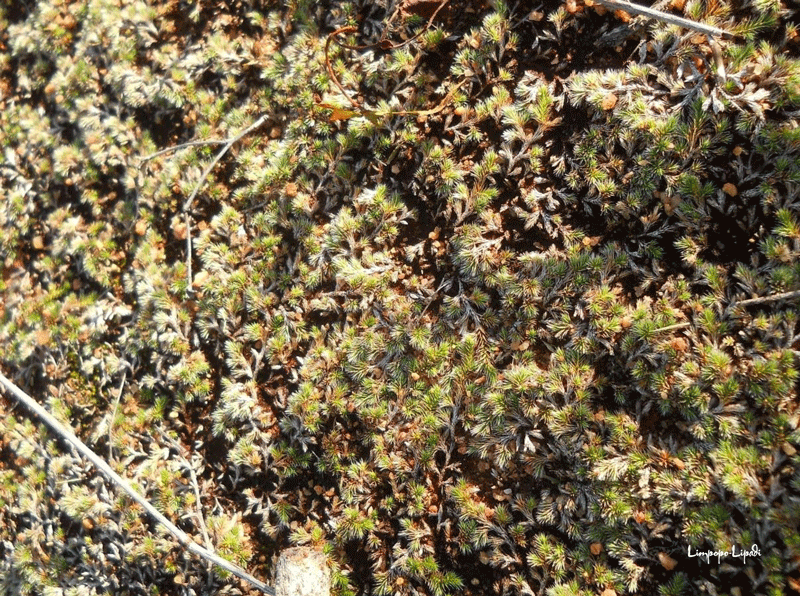Moss is not something that you would normally associate with our arid woodland environment. So, imagine my surprise when I stumbled upon reasonably extensive swathes of moss as we were doing our recent vegetation survey.
Thanks to all the amazing rain we have had regionally this year, we’ve seen some plants that we would not normally see, to grow in fair abundance in places you would not normally expect to find them. Moss (division Bryophyta), any of at least 12 000 species of small, nonvascular spore-bearing land plants, is distributed throughout the world (except in saline water) and is commonly found in moist and shady locations (not exactly how I would describe Limpopo-Lipadi). Moss is best known as those species that carpet woodland and forest floors. Ecologically, moss breaks down exposed substrata, releasing nutrients for the use of more complex plants that succeed them. They also aid in soil erosion control by providing surface cover and absorbing water, and they are important in the nutrient and water economy of some vegetation types.

Moss species differ from one another, primarily in the structure and specialisation of their sporangia (spore cases). The stemlike and leaflike structures of moss plants constitute the gametophytic (sexual) generation. The sporophytic (asexual) generation develops from the gametophyte and usually consists of a raised stalk, or seta, which terminates in the sporangium. The sporangium remains dependent on the gametophyte, to varying degrees, for water and nutrients. Mosses reproduce by branching and fragmentation, by regeneration from tiny pieces of leaves or stems, and by the production of spores. The spore germinates and grows into a branching green thread (protonema), under favourable conditions. Ultimately, the gametophyte grows from a small bud, produced by a cell of the protonema that divides and differentiates.

Moss has been blamed for ice ages and mass extinctions. When the ancestors of modern-day moss started to spread on land 470 million years ago, they absorbed CO2 from the atmosphere and extracted minerals by secreting organic acids that dissolved the rocks they were growing on. These chemically altered rocks reacted with the atmospheric carbon dioxide and formed new carbonate rocks in the ocean through the weathering of calcium and magnesium ions from silicate rocks. The weathered rocks also released a lot of phosphorus and iron, which ended up in the oceans, causing massive algal blooms, extracting more carbon dioxide from the atmosphere. Small organisms feeding on the nutrients created large areas without oxygen, which caused a mass extinction of marine species, while the levels of CO2 dropped all over the world, allowing the formation of ice caps on the poles.
Moss is generally considered good, especially in sequestering carbon, and we welcome these species as part of our biodiversity.
